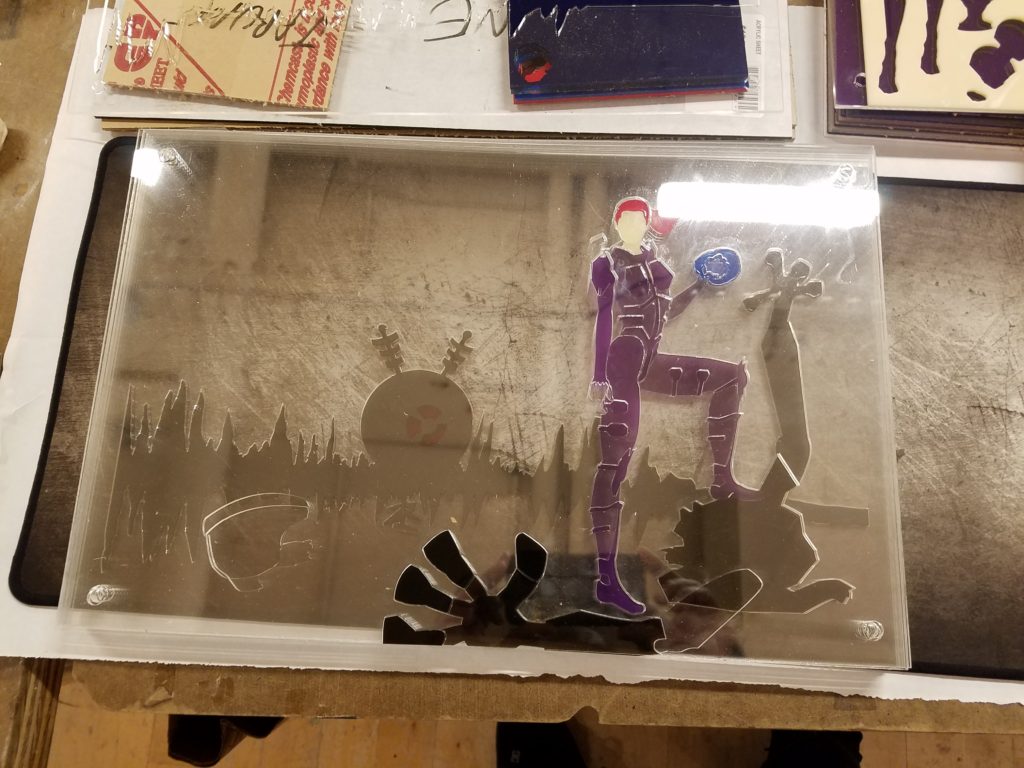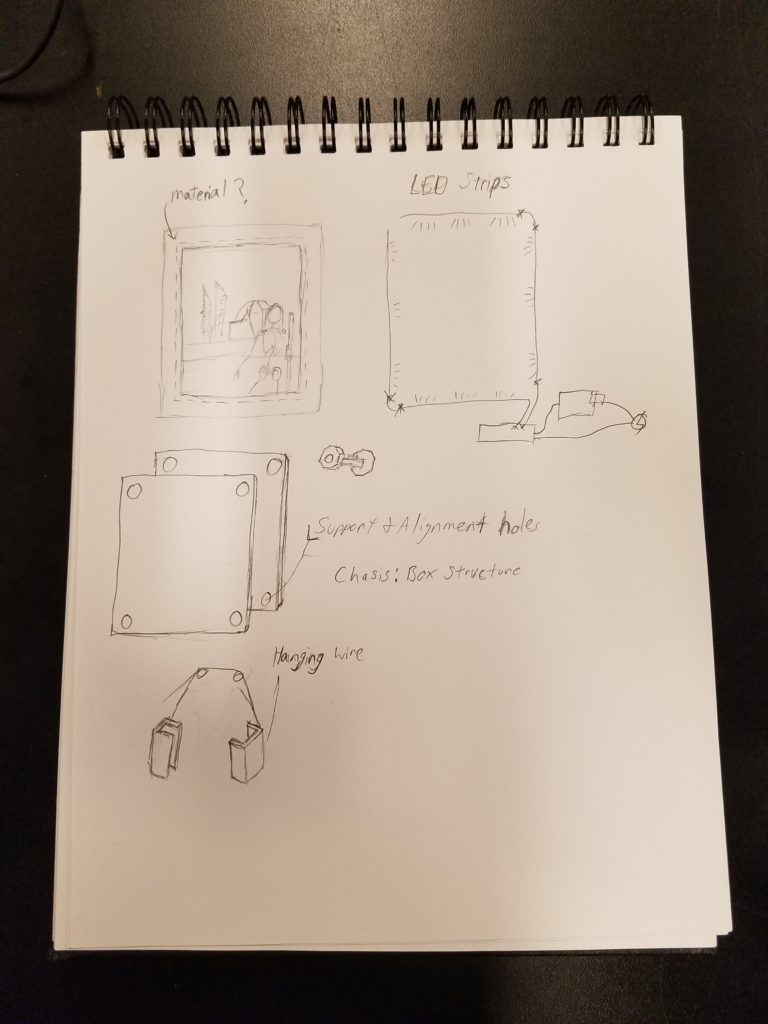Final Project
My final project proposal is derived off of my previous work. Continuing with the theme of modifying user submitted images, I decided to do an experiment with generating ID cards.
A user would enter in relevant information like name and year, then choose a school’s ID format. Lastly they would upload a picture to use for the ID and they would receive back a generated image similar to the ID they would have as a student of that school.
This is for intellectual purposes only. I feel depending on Visual ID checks is a big vulnerability for any institution.
Homework #9
Talk assignment: Connected, but alone? – Sherry Turkle
Sherry gave a TED talk about a topic that many can relate to. That is the use of technology to communicate. But it’s more specifically using technology to replace traditional methods of connecting like talking or being physically present. She raises the concern about how our society is depending more on digital communication at the cost of us not being able to really have relationships with other people. Relationships have certainly changed over the last twenty something years. I think how and when digital communication is used determines if it’s impact is positive or negative.
Homework #8
Reading:
Network Neutrality, Broadband Discrimination – Tim Wu
This article laid the groundwork for what would be a hot button issue over the next decade that followed.
Different parties have their own interests in mind when they argue for or against net neutrality. Even when groups agree for or against it, there are numerous ways in which each goal can be achieved. I feel the net should be fair and promote innovation as much as possible.
However there needs to be a guiding hand to some extent. This is to ensure that the smallest of entities have some sort of representation when decisions are being made. Also it would be easier to stop an ISP from getting out of control before it happens.
Homework #7
Reading:
Surveillance and Capture – Two Models of Privacy & Beyond the Mirror World
These two articles of Agre’s approach the theme of privacy in different ways. The first, Surveillance and Capture approaches the topic in a very methodical and repetitive way. He brings up a interesting distinction between the two methods of “monitoring”. They are usually not the same and have different implications. The act of surveillance is proactive in a sense. It requires someone to watch or to react to being “watched” to be effective.
The capture method is passive in the sense that data is captured, and is essentially meaningless unless reacted upon. So if an employee keeps swiping in late, it doesn’t mean anything unless that data is being used to determine lateness. Agre made a good point about there needing to be some sort of model for the data being recorded. There has to be a correlation with the real world. Otherwise you are just looking at measurements and specific event triggers. Even when there is a real world correlation, it doesn’t prevent errors or obfuscation.
I think at one point in the article the author said that some combination of these two models would be an very effective tool, depending on the intentions of the watcher.
In his writing, Mirror World, he outlines what implication would a virtual world have on privacy. Or more so, what would the requirements be to copy one of more versions of our world into a digital form. Would we have the same privacy as we do in real life? Is that possible when a copy of your life is stored in the Mirror World.
Other things to consider if who will have access to this information? Even if your privacy is maintained, there’s no guarantee this information can’t be stolen from the Mirrow World in real life, or even digitally.
He also goes on to describe how the paradigms of computer science hasn’t changed much over the century. Yes we have faster processing and materials to make similar components like vacuum tubes and transistors. But I think his point is that working systems tend to evolve for better of worse. So it is important to try to use the tools as best as possible.
For example, databases paradigms are old, but there was a important in its history where it had to be established that we are recording the data of a type of person, rather than each individual. This way of thought ensures that the databases are viable and work efficiently.
Homework #3 Draft
HW#2 Message Board Entry
HW#2 Message Board
HW#3 Message Board Template+DB
READING:
John Perry Barlow – A Declaration of the Independence of Cyberspace
It was interesting to see even at the beginning of the “web” explosion, there was already big government trying to get control of what it didn’t fully understand. As a teenager at that time, it really felt like a strange and new world for me to explore. It felt like the Wild West. There didn’t seem to be any rules. People were testing the boundaries of what they could get away with. Some people didn’t understand much of the World Wide Web and were either exploited or hide in whatever corners they were comfortable in.
The article sort of highlights the sense of freedom and rights we thought it gave us. People didn’t want to be monitored and controlled by some faceless entity when they themselves thought they were anonymous. The article does get repetitive but the points I took away from it is that the author wanted to fight for freedom on the internet and motivate other to follow suit.
Unfortunately it looks like what he was fighting against has already won the battle. There is heavier regulation now and privacy on the net is probably worse now with companies able to sell your browsing history. There are entire countries censoring content and making it illegal even to access certain communication and news sites. A consistent theme however is there are always people circumventing the government and technology to free information and access.
HW#2 Reading – The Medium is the Message
Marshall McLuren presents a strong argument in this reading. One of his main points is the vehicle that is used to deliver a message, is also a message within itself. There is no way to separate the two. I agree with his thoughts on this. Communication and the sharing of knowledge has long since been a source of power throughout humanity. There are many factors outside of the medium that impacts who actually can receive the content. From economic status to, cultural bias and available resources.
Media marketing people and advertisers know these concepts already. It’s not only about creating the best ad or commercial. You need to know the demographic you are trying to reach. Displaying something on a large billboard sends a different message than putting it in guitar magazine. How content is delivered to you can greatly affect the message you receive in it.
But can the same message be “good or evil”? Is the data neutral and the intent up to the consumer? The author seems to argue against this sort of neutrality. For example, referencing a firearm as a neutral message and the user deciding on it’s morality. I personally am a strong believer of context. There are situations where a medium can only be used for its intended purpose.
At the end there seems to be no such thing as unbiased information and we need to be aware of how and what is delivering this content to us.
Networked Media HW #1
Link to “firstserver”: http://174.138.50.174:8080/index.html
Response to Vannevar Bush’s As We May Think:
One of the most surprising things about this article to me is the date it is written. It was interesting to read Vannevar recap the current technology
in the 1940’s and make such bold predictions of how they could potentially
evolve.
My favorite prediction was the memex. He realized thanks to compression and improvements of reproduction methods, we could have volumes of data available at our desk. Then have it projected on a screen on demand.
To hear about how state of the art tubes were at the time made me think of these large machines served a limited purpose.
The focus of the article is really regarding passing information to peers and future generations for scientific betterment. Improving technology mean improving the quality and types of records we can create.
Pitch for Illuminated Acrylic Art
This was my midterm for Piecing It Together. I created a layered illustration using the artwork from a videogame character. It turned out well despite having some issues with alignment of the sheets.

I decided to continue with this method for my final but using my own art and resolving some issues like alignment and being able to easily display the work.


My solution was to make sure every artboard can easily be related to eachother. By creating holes near each corner, I can make sure all the paths are aligned and also a washer, nut and bolt combo to keep the piece together at the same time.

I used a digital painting I made for the final. Among a lot of the feedback Eric gave, he recommended using a light source for the final. So I plan on attaching LED strips to the edges for some dynamic lighting using an Arduino and touch sensor.
Longer explanation than submission.
I am confident I will be able to finish and put fine touches on this by next week.
Piecing It Together Final Sketches
